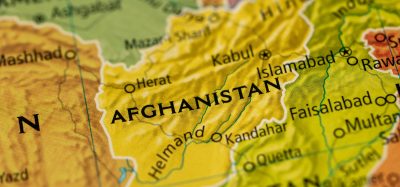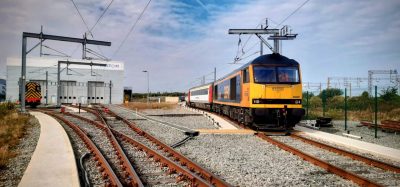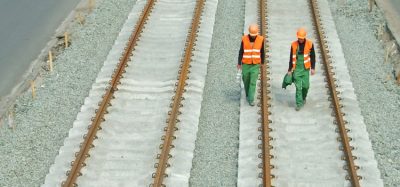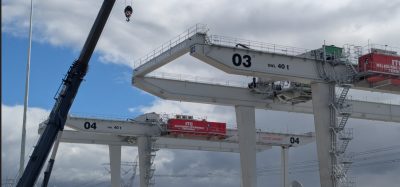The innovative rail freight corridors are coming to life
Posted: 26 September 2013 | | No comments yet
By 10 November 2013, six of the nine rail freight corridors initially foreseen by the EU Regulation 913/2010 concerning a European network for competitive freight will become operational. Rail Freight Corridor 2 (RFC2) is one of them. These corridors are extremely ambitious and will lead to major changes for international rail freight.
Capacity allocation
The first major change concerns capacity allocation. From November 2013, corridors will offer capacity shaped according to international rail freight market demand. This capacity will take the form of ‘off the shelf’ paths, reserved for international freight and that can either be requested for the next annual timetable or, for more flexibility, at short-term notice.
The infrastructure managers (IMs) and allocation bodies (ABs) of RFC2 have just finalised a major transport market study which has enabled the assessment of customer needs. They are now working closely together to offer applicants a sufficient number of high quality paths with seamless border crossings.
By 10 November 2013, six of the nine rail freight corridors initially foreseen by the EU Regulation 913/2010 concerning a European network for competitive freight will become operational. Rail Freight Corridor 2 (RFC2) is one of them. These corridors are extremely ambitious and will lead to major changes for international rail freight. Capacity allocation The first major change concerns capacity allocation. From November 2013, corridors will offer capacity shaped according to international rail freight market demand. This capacity will take the form of ‘off the shelf’ paths, reserved for international freight and that can either be requested for the next annual timetable or, for more flexibility, at short-term notice. The infrastructure managers (IMs) and allocation bodies (ABs) of RFC2 have just finalised a major transport market study which has enabled the assessment of customer needs. They are now working closely together to offer applicants a sufficient number of high quality paths with seamless border crossings.
By 10 November 2013, six of the nine rail freight corridors initially foreseen by the EU Regulation 913/2010 concerning a European network for competitive freight will become operational. Rail Freight Corridor 2 (RFC2) is one of them. These corridors are extremely ambitious and will lead to major changes for international rail freight.
Capacity allocation
The first major change concerns capacity allocation. From November 2013, corridors will offer capacity shaped according to international rail freight market demand. This capacity will take the form of ‘off the shelf’ paths, reserved for international freight and that can either be requested for the next annual timetable or, for more flexibility, at short-term notice.
The infrastructure managers (IMs) and allocation bodies (ABs) of RFC2 have just finalised a major transport market study which has enabled the assessment of customer needs. They are now working closely together to offer applicants a sufficient number of high quality paths with seamless border crossings.
Single counter
Railway undertakings (RUs) and other applicants will be able to request international capacity directly from the corridor in a single operation. With this in mind, each corridor has set up a one-stop-shop (so-called Corridor OSS) as a unique contact point for capacity allocation. This means that, for an RU that wants to run a train between, for example, Rotterdam and Basel, via Belgium, Luxembourg and France, only one request of capacity will be made and RFC2 OSS will provide a single answer – not five – to this request. RFC2 will use standardised processes and the European tool Path Coordination System (PCS) developed by RailNetEurope to handle capacity allocation. On top of that, RFC2 OSS is currently coordinating with the OSSs of other rail freight corridors to enable capacity allocation on several corridors to be performed in one operation.
‘Instructions for use’
The Corridor OSS will also provide all necessary information on the corridor conditions of use by publishing a Corridor Information Document. This document will give corridorscale information such as infrastructure character istics, access conditions, description of terminals and capacity and traffic manage – ment procedures. RFC2’s Corridor Information Document will be available on its website1 from November 2013.
Coordination of works
The second major change concerns coordination of works. IMs along each corridor have started to coordinate the planning of works that affects capacity corridor-wise. The intention is that an RU wanting to run a train from country A to country B will no longer be in a situation where infrastructure works are at the same time being carried out on the main line in country A and on the alternative line in country B. In mid- 2013, for the first time on RFC2, managers in charge of works planning from the Netherlands, Belgium, France, Luxembourg and Switzerland all got together to start coordinating the schedule of works. From now on, they will meet twice a year, at times which are optimal for planning processes. In order to be completely transparent towards applicants, they will also inform them on capacity restrictions by publishing the location and dates of planned works for the next two years. This information will be updated every half-year.
Traffic management
Traffic management is also concerned by the setting up of the corridors. One of the main changes concerns priority rules, as each IM will have to make sure that it gives sufficient priority to international freight trains. In other words, an international freight train that is on time should remain as far as possible on its path in case of disturbances.
The coordination of traffic with terminals is also a concern for corridors. RFC2 will analyse the interface between railway network and terminal operations, starting by the main terminals, such as the two majors ports of Rotterdam and Antwerp, and if necessary, study possible solutions to optimise interconnection.
Planning of investment projects
Each corridor has the responsibility of drawing up and publishing an investment plan, containing all investments foreseen on the corridor, in the medium to long-term. This plan includes extension and renewal projects, the deployment plan of interoperable systems (including ERTMS) as well as investments for the elimination of bottlenecks. This means that for the first time, IMs exchange information on investments with neighbouring IMs, thus facilitating the coordination of these investments at European level. To ease this process, RFC2 defined a format of exchange which can be used by other corridors.
RFC2 has identified for its plan 71 projects or programmes which may go live in a 10-year horizon, for a total cost of approximately €6 billion. An important part of these investments concerns the deployment of ERTMS along the corridor. This system will enable the gradual replacement of the five signalling systems currently co-existing on the corridor, thus leading to cost reductions for RUs. Eight capacity bottlenecks have been identified along RFC2 and the investment plan lists all investments foreseen for their elimination. However, bottlenecks are not only a matter of capacity and on RFC2 they also concern loading gauge and train length. High priority will be given to the enhancement of these parameters, in order to better suit market requirements. Studies will be initiated to assess the feasibility of increasing the loading gauge to meet market needs for the transport of trucks by rail.
Performance management
The performance of the corridors will be measured regularly and the results published annually. For RFC2, nine Key Performance Indicators (KPIs) have been defined, widely covering all aspects of the corridor. Each of these indicators will be measured against a target set and updated according to the progress of the implementation of the corridor.
To improve the quality of service, train performance has to be specifically addressed by corridors. Besides KPIs, RFC2 makes use of more detailed reporting functions of TIS (Train Information System), which enables the IM and RU to get data on international traffic punctuality. These reports go in-hand with meetings where IMs and RUs investigate the delay reasons, draft action plans and follow-up on measures to be taken.
The performance of each corridor will also be monitored by an annual customer satisfaction survey and the results will be published. RFC2 will take part in the survey which is currently being elaborated at European level by RailNetEurope.
Reinforced cooperation at all levels
The governance of the corridors includes an Executive Board, composed of representatives of all member states concerned by the corridor and a Management Board, formed by IM and AB representatives of the corridor. New is the creation of two Advisory Groups: one composed of RUs which are interested in the use of the corridor (RAG) and the other one composed of managers and owners of the terminals which are along the corridor (TAG).
The IMs and ABs of RFC2 work in close cooperation. They have set up a permanent team and 10 working groups to tackle the numerous tasks which have been entrusted to the Management Board.
The Management Board also benefits from a close cooperation with the Executive Board, to which it reports, as well as with the two Advisory Groups: the RAG as it enables IM/AB to be aware of customer expectations and the TAG as terminals are also a major concern for IM/AB, so as to provide RUs with better interconnections between corridor lines and the terminals.
On RFC2, fruitful discussions have already led to a positive dynamic, as all stakeholders have the common ambition to maximise rail transport attractiveness and efficiency in order to gain market shares from the road.
Support from the European Union
The European Commission has always played a major role in supporting rail freight corridors, as it has supported them both politically and financially. RFC2 takes part in working groups organised by the Commission to facilitate coordination between corridors and has received European funding to co-finance ERTMS as well as to carry out the tasks resulting from the EU Regulation 913/2010.
Soft measures
The setting up of rail freight corridors in such an advanced way is certainly one of the main innovations in today’s European rail freight sector. If some heavy investments are necessary to improve the efficiency of rail freight, such as ERTMS, the success of these corridors will also, and mainly, depend on the ability of the railway sector to implement soft measures such as the coordination of capacity allocation, works and traffic management. These measures will be the fruit of strong collaboration between all stakeholders. European rail freight is now ready to take on the many challenges it faces.
Reference
1. www.rfc2.eu
Biography
Paul Mazataud is the Managing Director of the EEIG RFC2 that he joined in October 2010. He is in charge of all aspects of the Corridor management, includ – ing the implementation of the rail freight regulation. Paul joined Réseau ferré de France as Deputy Head of Development in July 2009. Before moving to the railway sector, Paul worked in the structured finance business. Paul graduated in 1993 from Ecole des Mines de Paris where he studied engineering and economics.
Stay Connected with Global Railway Review — Subscribe for Free!
Get exclusive access to the latest rail industry insights from Global Railway Review — all tailored to your interests.
✅ Expert-Led Webinars – Gain insights from global industry leaders
✅ Weekly News & Reports – Rail project updates, thought leadership, and exclusive interviews
✅ Partner Innovations – Discover cutting-edge rail technologies
✅ Print/Digital Magazine – Enjoy two in-depth issues per year, packed with expert content
Choose the updates that matter most to you. Sign up now to stay informed, inspired, and connected — all for free!
Thank you for being part of our community. Let’s keep shaping the future of rail together!
Issue
Related topics
Related organisations
Rail Freight Corridor 2, RailNetEurope (RNE), Réseau Ferré de France (RFF)







